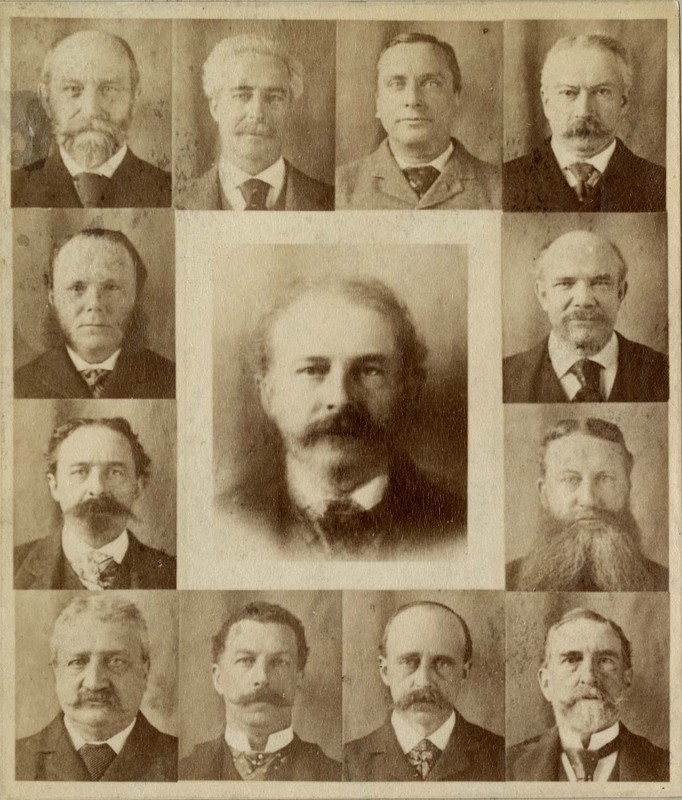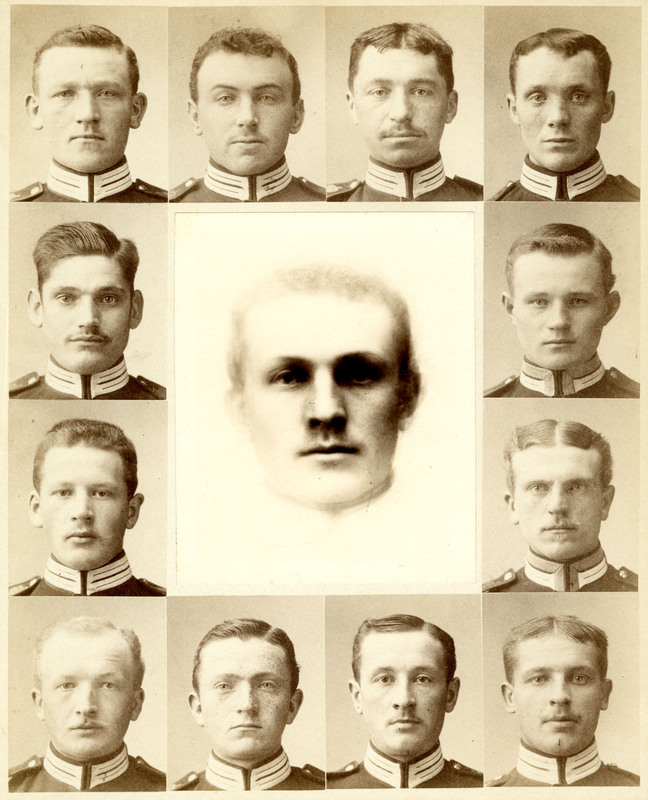Henry Pickering Bowditch
The composite photographs in this exhibit as well as others in the collections of the Countway were created by physiologist Henry Pickering Bowditch, but the development and original interpretation of the composite process with its eugenic implications was the work of Sir Francis Galton. Galton first published his research as “Composite portraits,” in Nature in 1878. Galton said, “The photographic process of which I there spoke, enables us to obtain with mechanical precision a generalised picture; one that represents no man in particular, but portrays an imaginary figure, possessing the average features of any given group of men. These ideal faces have a surprising air of reality. Nobody who glanced at one of them for the first time, would doubt its being the likeness of a living person. Yet, as I have said, it is no such thing; it is the portrait of a type, and not of an individual.”
Henry Pickering Bowditch was appointed Assistant Professor of Physiology in 1871, Professor of Physiology, 1876, and became the first George Higginson Professor of Physiology in 1902, Emeritus, 1906. Bowditch served as Dean of the Medical School from 1883-1893.
Dr. H. P. Bowditch took photographs of himself and eleven colleagues—all members of a physician’s dining club, the Kappa Pi Eta—in 1887 and again in 1892 and then devised a composite portrait of all twelve to isolate the common characteristics of a typical physician. “The face is distinctly intellectual in its character, and the apparent age is not far from the average age of the components…. The method of composite photography has, therefore, in this case, at any rate, produced a portrait which may be regarded as typical of the components, since its features fairly represent the group in respect to the only two qualities, namely, age and intelligence, in which the individual faces resemble each other.”
The original of this photograph was displayed with a number of other Bowditch composites at the Second International Exhibition of Eugenics in 1921.
Bowditch reproduced and described this composite image of Saxon soldiers, as well as a composite image of Wend soldiers, in his article, “Are composite photographs typical pictures?” printed in McClure’s magazine in September 1894. Of them he says, “A study of the faces here presented certainly suggests the conclusion that there must be some racial peculiarities showing themselves in the composite portraits. The two composites of each race are clearly more like each other than like those of the other race, and the squarely cut jaw and brow of the Wend composites give the impression of greater vigor and strength of character than the more rounded features of the Saxons.”
The composite portrait of Wend soldiers that accompanies the Saxon soldiers.
Galton admired these composites; some years after Bowditch’s death, they were also displayed at the exhibition at the Second International Congress of Eugenics in 1921.
Galton says of the composites of Saxon and Wend soldiers done by Bowditch: “The composites are indeed beautiful and quite different in ‘type’ from both American and English. The Saxon & Wends being more alike to one another than either of them to the former two. I congratulate you on having added in this way to the too slowly collecting of typical forms. I suppose you will co-composite the Saxons & Wends respectively. One really ought to get a large collection in this way of racial types. I wish I were a better photographer myself to help in the matter. Your composites are sent today to exhibition at the Portrait Association at Edinburgh, partly for their direct interest and partly for the indirect advantage of supporting a proposal that will be made of obtaining photos of the inhabitants of selected typical villages in various parts of the British Isles where from historical reasons, the breed is likely to have been local for a long time. This is part of a larger scheme briefly designated as an ethnographic survey, which others are interested in and may take adequate pains to do effectively.”





